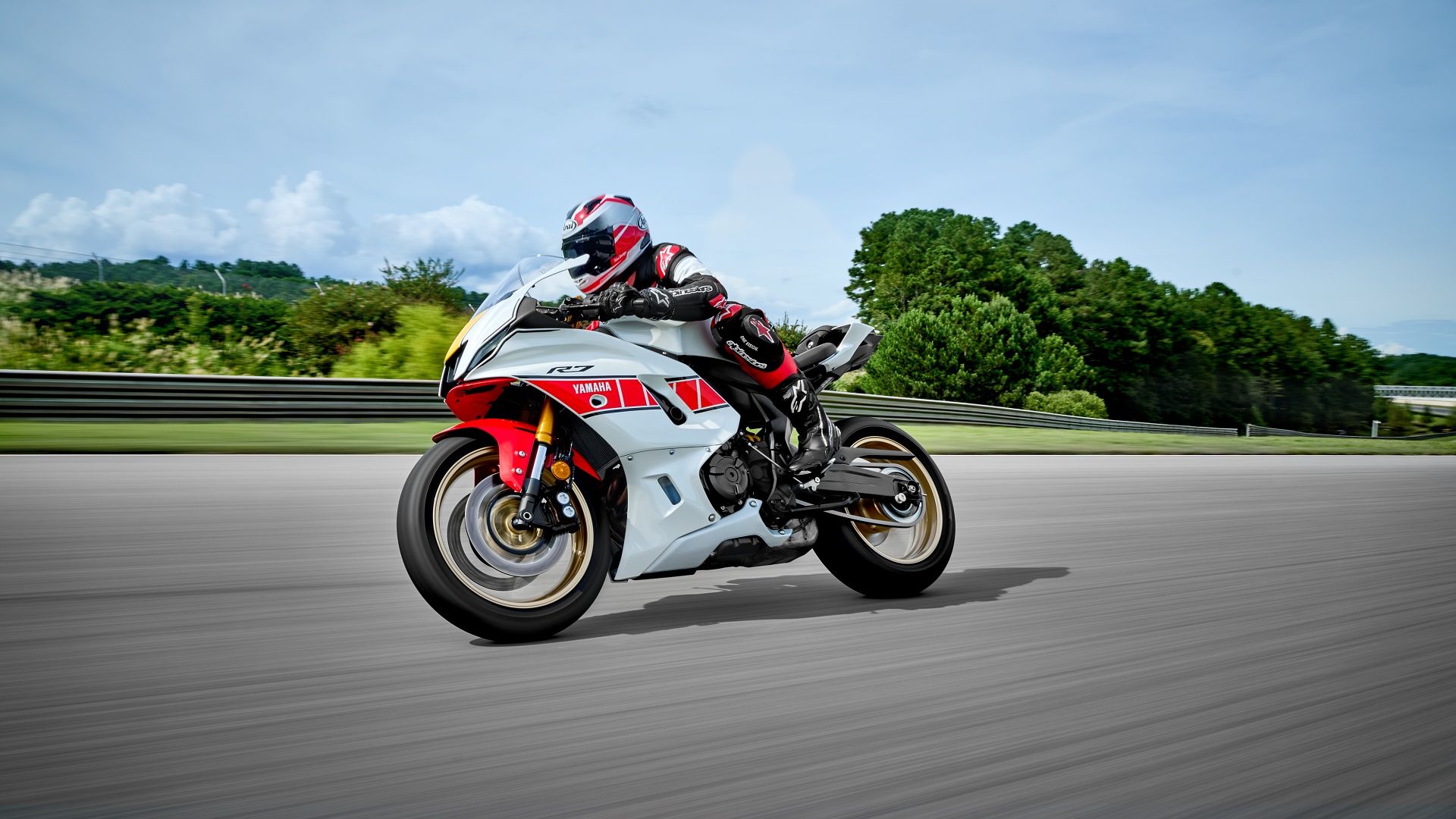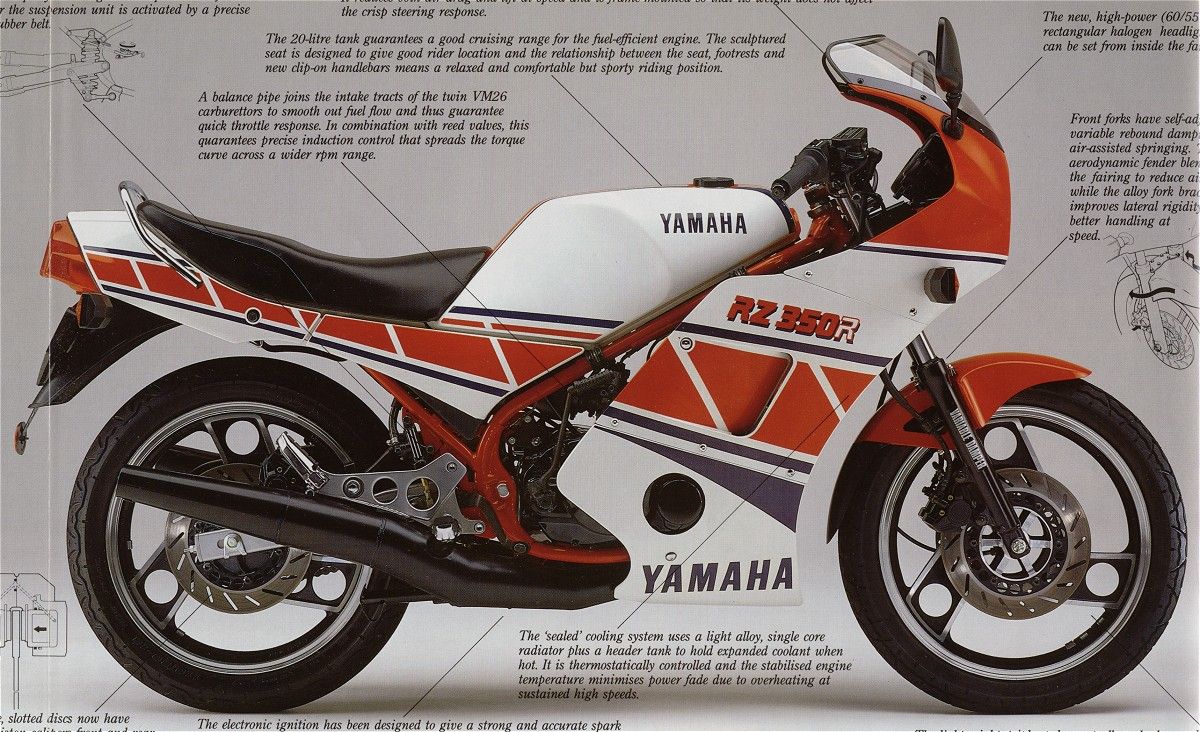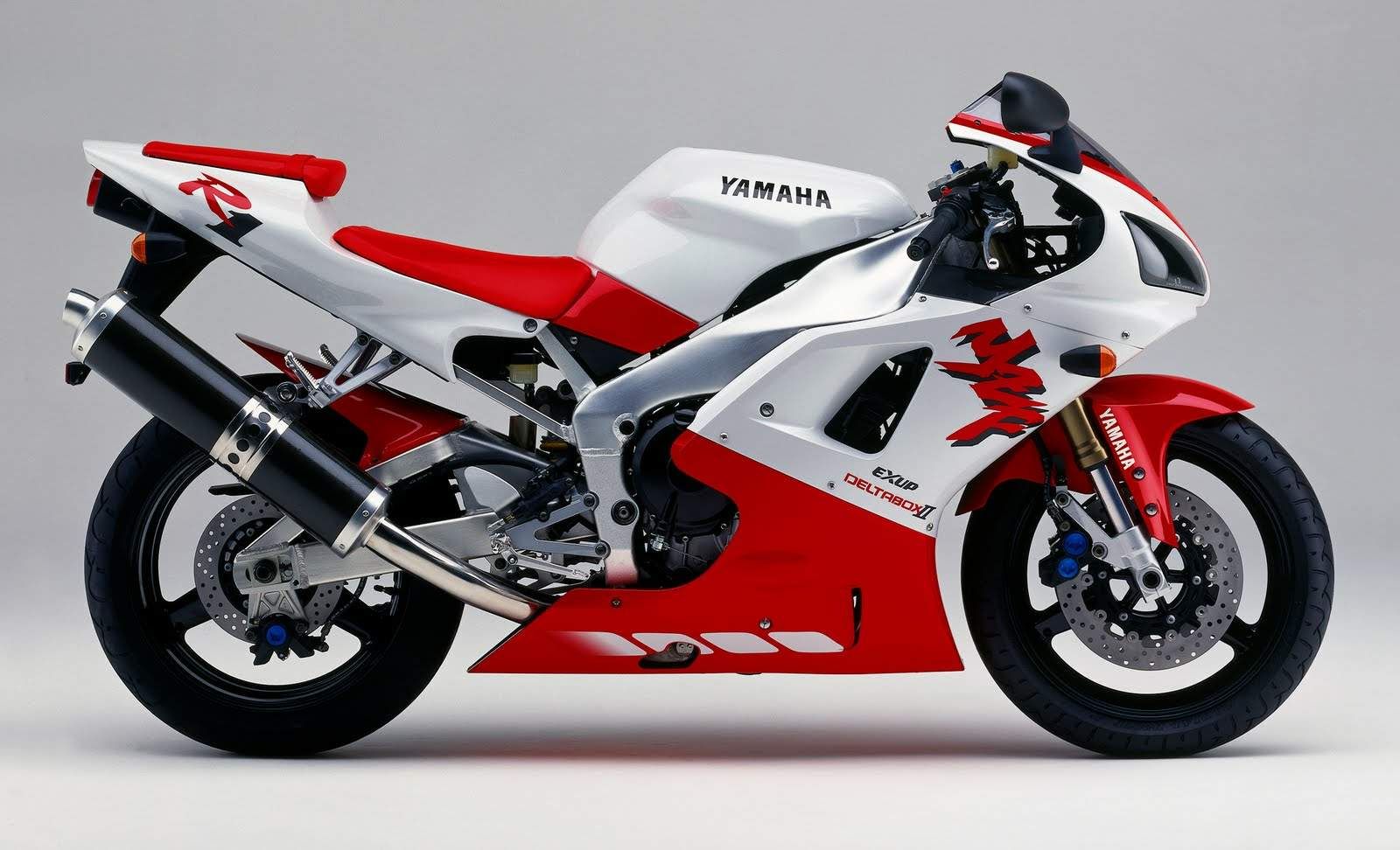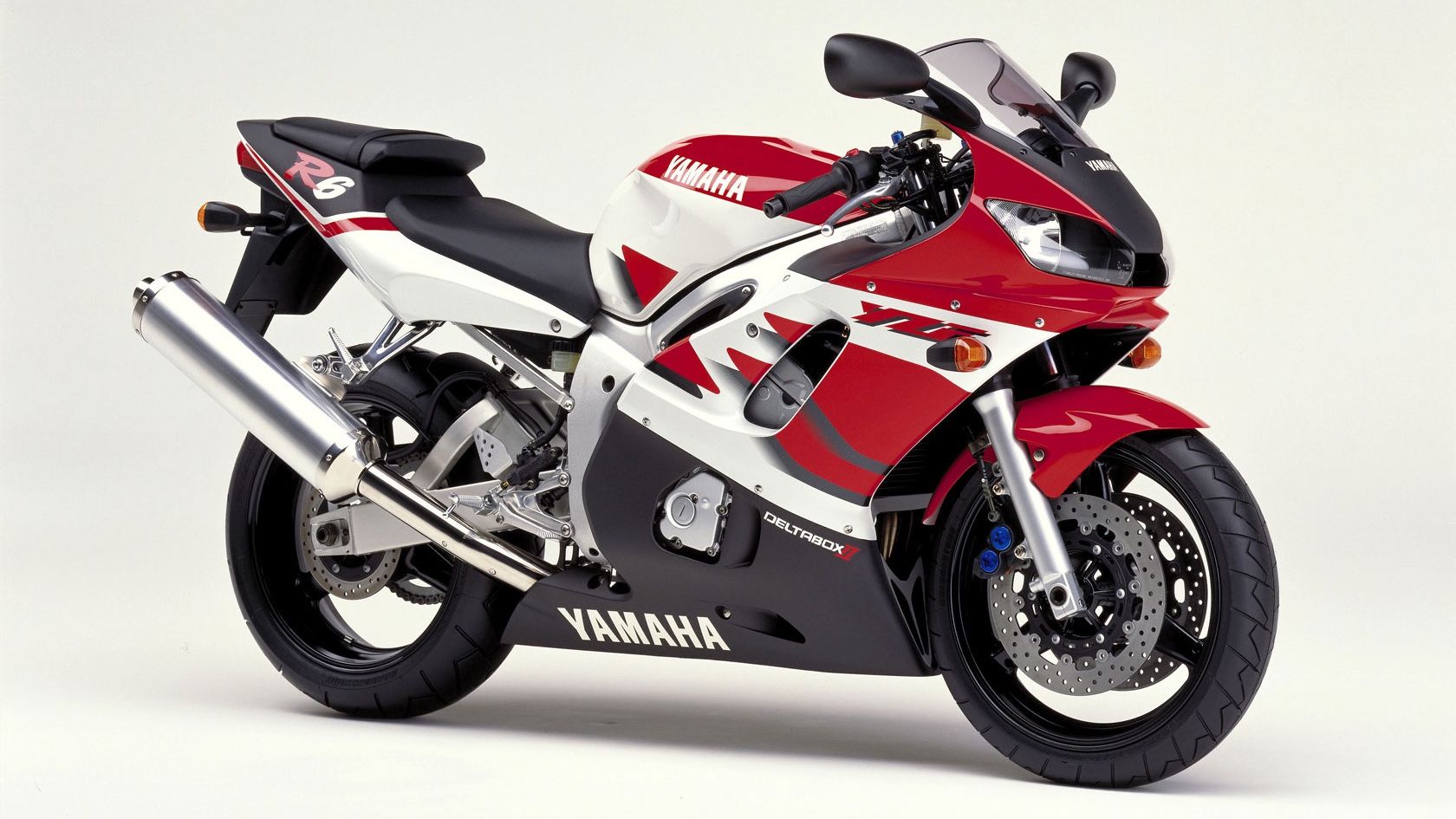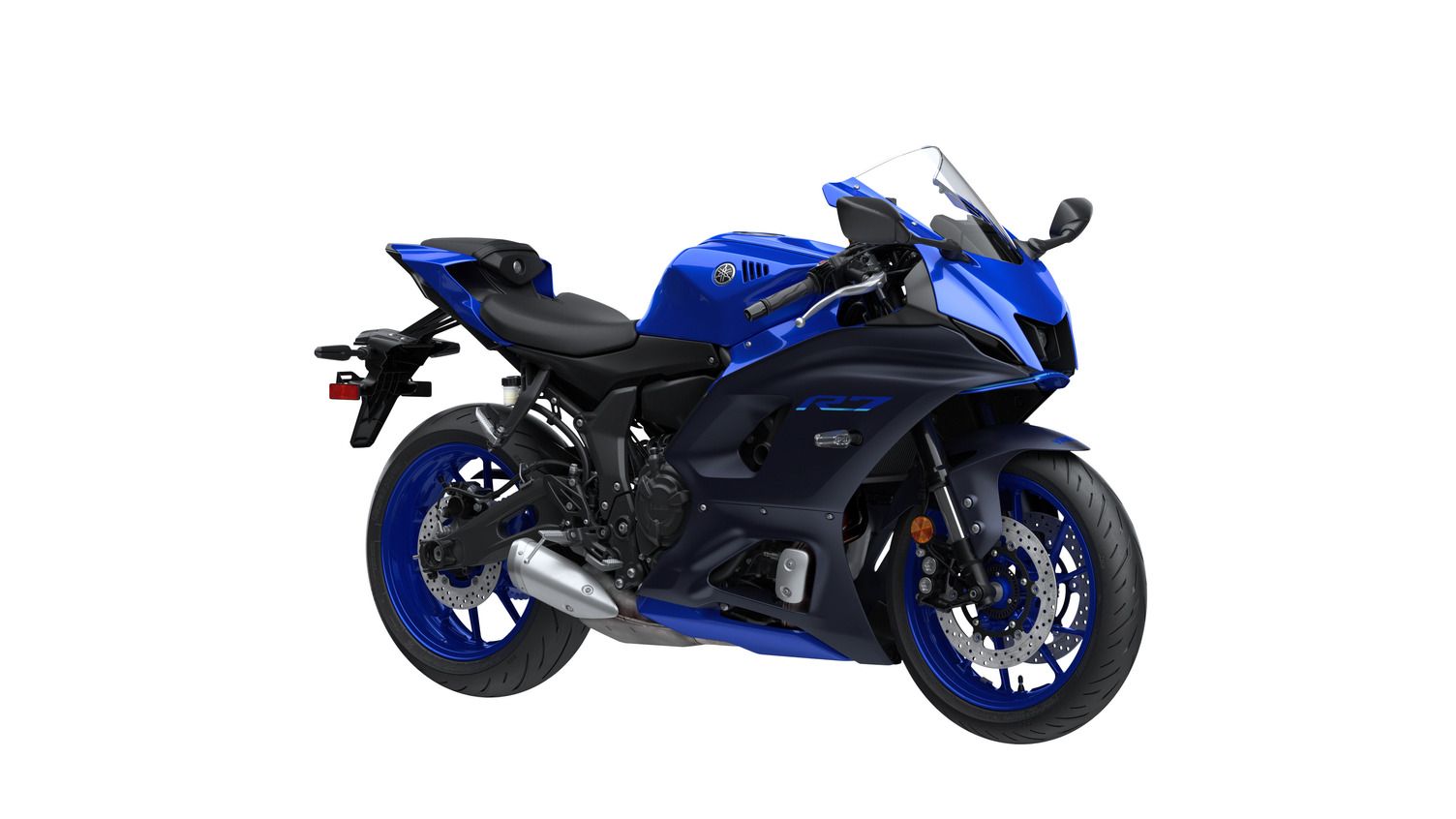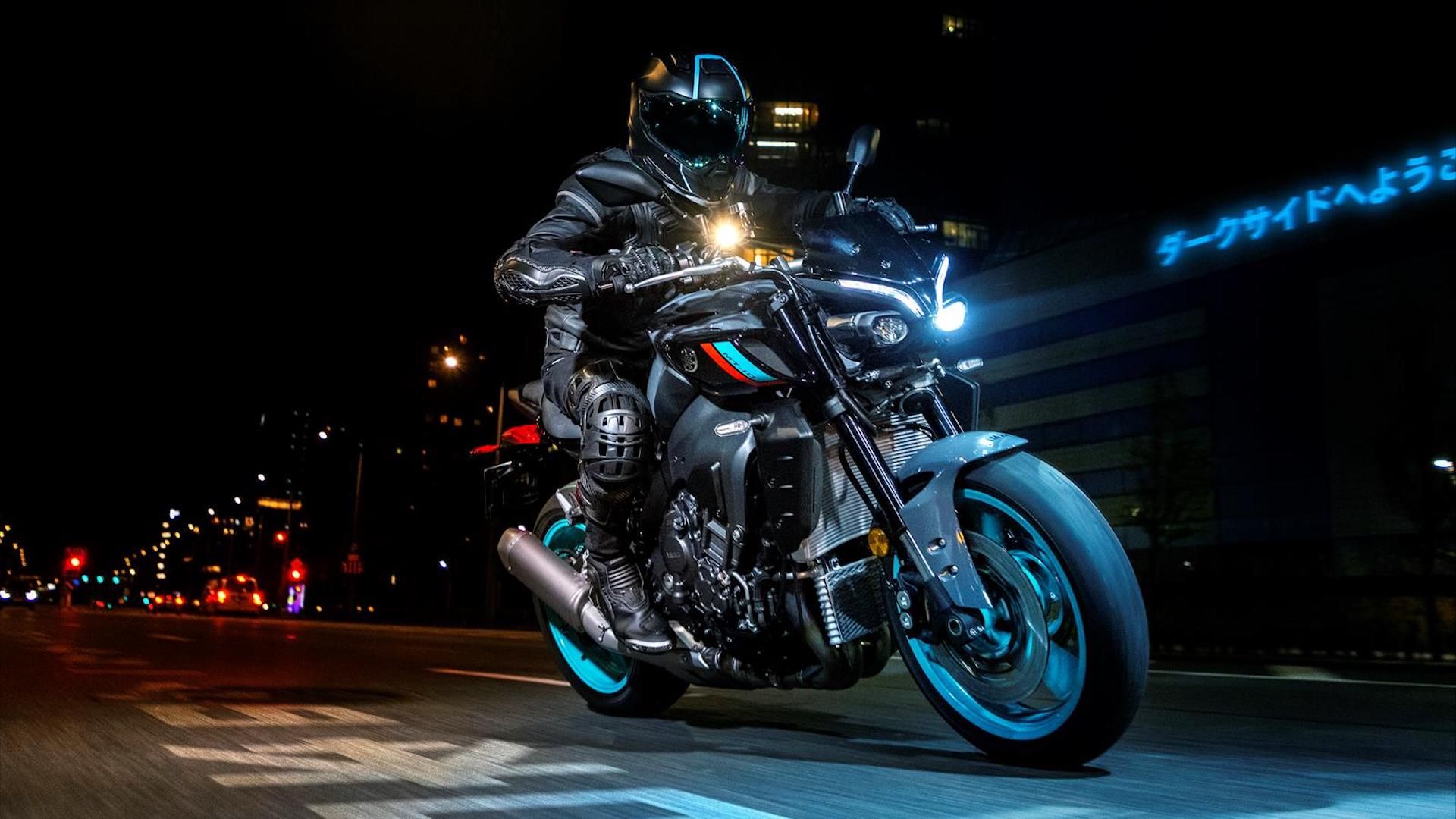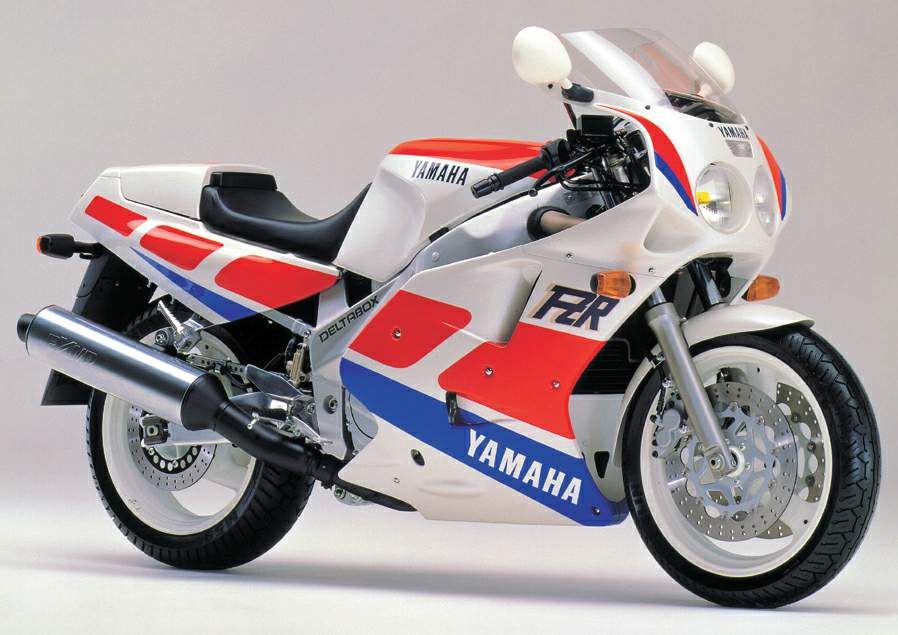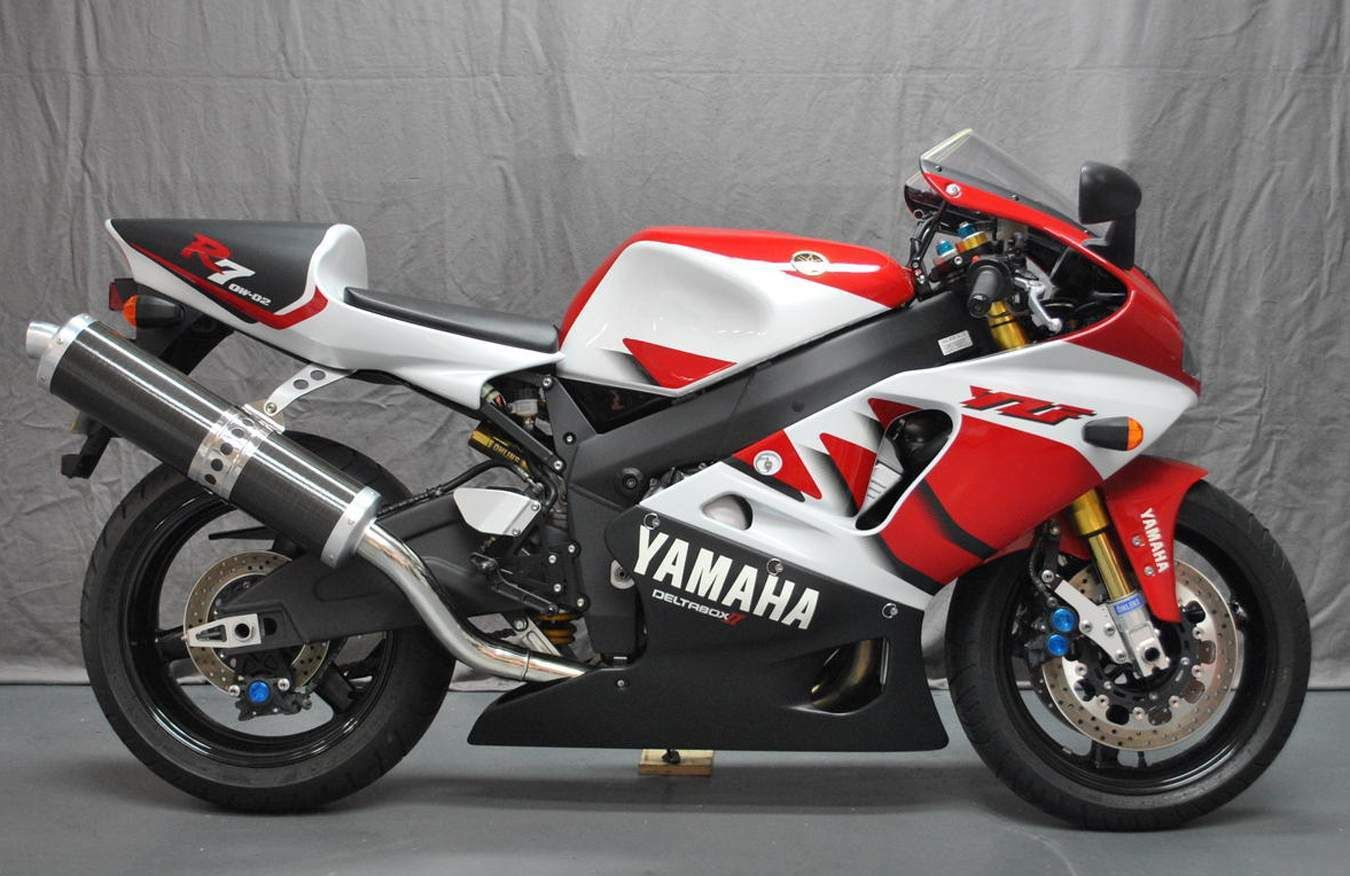If the Japanese motorcycle manufacturers only came online after the second world war, they more than made up for lost time and, in very short order, they were dominating markets all over the world as well as taking the racing world by storm.
Compared to British and American manufacturers’ products, the Japanese were building light, reliable, and most importantly, fast motorcycles that would be developed to define the sport bike class for decades to come. Before building motorcycles, Yamaha was well-established as a maker of musical instruments and was soon to be making music of a different kind, from the powerful two-strokes of the 1970s to the 200 horsepower R1 of today. Here are the ten best Yamaha sport bikes ever built by the company.
10 Yamaha RD350F
By 1983, when the Yamaha RD350 arrived, the two-stroke engine was rapidly being phased out by manufacturers for road motorcycles. The main problem was emissions, and it’s a shame a handle wasn’t got on this sooner because a two-stroke engine is much simpler, and therefore, cheaper to manufacture as well as producing twice as much power than a four stroke for a given displacement. With 60 horsepower and an overall weight of just 328 pounds, coupled with the fact the Japanese were really getting to grips with chassis design at that point, gave sparkling performance and a reduced desire to kill the rider!
9 Yamaha RZ350 F1
Successor to the famed RD350 was the RZ350 which, significantly, was the first mass-produced Yamaha to be equipped with the Yamaha Power Valve System, or YPVS. Due to the nature of how a two-stroke engine works, the power band is often very narrow, with little torque at lower revs. This is no problem on a race bike, where the engine can be kept at high revs and in the power band, but on road bikes, this is not always possible.
A Power Valve system works on the exhaust valve, varying the duration of the exhaust port opening time, giving more low-down torque. The RZ350 was also the first motorcycle to be sold in the U.S. with a catalytic converter incorporated into the exhaust system. However, eventually, the two-stroke was simply too ‘dirty’ to continue in the U.S. and it was dropped after only two years.
8 Yamaha YZF-R1
When Honda turned the sport bike world on its head in 1992 with the launch of the CBR900RR FireBlade, you can be sure that it produced a flurry of question-asking and accusatory pointing fingers in other parts of Japan. Yamaha was the first to blink, although its response took a further five years to reach market.
When it did, it was as much of a revolution as the FireBlade had been. If the Honda design had espoused a compact, light and powerful structure, then Yamaha took that to heart and made the R1 lighter, faster and even more powerful. There was absolutely no compromise anywhere, and from that moment on, the performance wars were well and truly on.
7 Yamaha YZF-R6
Following on from the success of the new breed of 1000cc sport bikes, it made sense to apply the lessons learned and technology developed to a smaller sport bike class: the 600s. The 600cc displacement class was already popular but no-one up to that point had produced an out-and-out sport bike in that category.
Yamaha adopted a no-compromise approach and while the model offered all the performance and handling prowess you could possibly want, any form of comfort was sacrificed at the altar of speed. 100 horsepower (later rising to 120+ horsepower) in a 372-pound all-in weight made many riders wonder why they needed a 1000ccc sport bike! Sadly outlawed today as a road bike due to emissions problems. The replacement YZF-R7 of 2023 is definitely not the same thing.
6 Yamaha YZF-R7
A sports bike for the responsible 2020s, rather than the hooligan 1990s and 2000s, or maybe we’re all simply getting too old? But hang on: it’s not necessarily that bad. While the R6 reflected the times with its diminutive inline four-cylinder engine, the modern R7 is in effect the parallel-twin engined MT-07, fitted with a full fairing and sport bike riding position, although still not as extreme as the R6.
If it is a sport bike for older riders who have surfed the sport bike wave since the 90s and now want something less cramped, powerful and costly, then it is also a sport bike that will be accessible to a new generation of sport bike riders. A crowd that hasn’t had anything built for them for ages, especially now that the Supersport 600s have all but disappeared. Proof that fun doesn’t necessarily mean stratospheric power outputs.
5 Yamaha MT-10
Cost-effective thinking is a characteristic of motorcycle manufacturers and one way of getting two bikes out of one is to remove the fairing of a sport bike and turn it into a naked sport bike. Everyone is doing it and Yamaha’s offering is the R1-based MT-10. The inline four-cylinder engine has been detuned to make ‘only’ 165 horsepower, which is still an insane amount of power in a 467-pound package, and coupled with sport bike dynamics thanks to top-spec suspension and braking, puts the ‘hooligan' back into motorcycling.
It’s a polite hooligan, however, with ergonomics that won’t have you running to the osteopath after every ride. An enormous electronic rider aid package, aggressive, stumpy looks and a relatively painless price tag mean that the MT-10 could possibly be the best Yamaha sport bike today.
4 Yamaha RZ500
In the 1980s, Grand Prix bikes for the road were few and far between, as GP bikes were two-strokes while road bikes were increasingly four-stroke. Yamaha was keen to capitalize on Kenny Robert’s hat-trick of GP World titles and decided to offer a street-legal version of his 500cc race bike. It was powered by a 50°, twin-crankshaft, V4 two-stroke engine, that pushed out a respectable 88 horsepower from just 499cc.
It was unusual in having a balancer shaft driven off the front crankshaft while both crankshafts were geared together to drive the clutch. The Japan-only RZV500R had a much lighter, hand-welded frame, shedding 9kg from the overall weight, and higher-spec suspension components with full adjustability. The first and greatest of the race replicas.
3 Yamaha FZR 750RR (OW-01)
A homologation special built in order to go head-to-head with Honda’s RC30 and Bimota’s YB4 in World Superbike racing. 1000 FZR 750RRs were built, and if they cost a fortune at the time - over twice the price of an FZR10000R road bike - it was a price many teams were prepared to pay for a ready-to-race sport bike.
If it has lights and mirrors, these are merely there as window dressing for the OW-01 was a race bike first and foremost: remove the lights and mirrors, fit the optional race kit, and you have a bike that can compete against the best in the world. Fitted with Yamaha’s EXUP (Exhaust Ultimate Power Valve), the torque curve was remarkably flat for an engine tuned for top-end power and torque, while the chassis was optimized to be stiff, quick-steering and giving good ground clearance.
2 Yamaha FZR1000
Indirectly, one of the sports bikes that gave rise to the Honda FireBlade of 1992. It’s not that the FZR1000 was overweight at 520 pounds, but the FireBlade was 70 pounds lighter and pointed the way forward for sport bikes. That’s not to say the FZR1000 was a bad sport bike: at the time of its launch in 1987, it was regarded as the world’s finest production sport bike: Cycle World magazine even crowned it Bike of the Decade. It marked the first appearance of Yamaha’s Deltabox aluminum perimeter frame, designed to be both light and stiff - something the Japanese were only just getting to appreciate as necessary - and ruled the sports bike world until the arrival of that pesky FireBlade.
1 Yamaha YZF-R7 (OW-02)
Yamaha certainly loves its homologation specials and the OW-02 was the second such sport bike to be built for World Superbike homologation, which at the time, was for bikes of up to 750cc. 106 horsepower as standard could be boosted to 135 horsepower with the fitting of a race kit. The design of the chassis borrowed heavily from the YZR500 Grand Prix bike, suspension was top-spec Öhlins and the engine contained many titanium parts.
Overall weight was 416 pounds, and overall, the YZF-R7 is one of the most desirable motorcycles to ever carry the Yamaha crossed tuning fork logo on its gas tank. It might never have taken a World Superbike title, but put one of these in your garage, and you can rest peacefully, knowing you have one of the all-time great motorcycles in your life.

